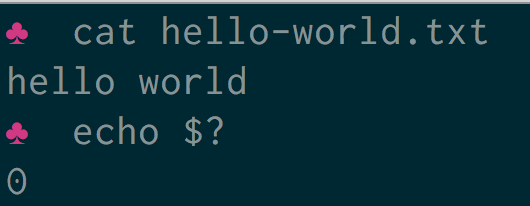Linux and Unix exit codes explained

What is an exit code in the UNIX or Linux shell?
An exit code, or sometimes known as a return code, is the code returned to a parent process by an executable. On POSIX systems the standard exit code is
0 for success and any number from 1 to 255 for anything else.
Exit codes can be interpreted by machine scripts to adapt in the event of successes of failures. If exit codes are not set the exit code will be the exit code of the last run command.
How to get the exit code of a command
To get the exit code of a command type
echo $? at the command prompt. In the following example a file is printed to the terminal using the cat command.
The command was successful. The file exists and there are no errors in reading the file or writing it to the terminal. The exit code is therefore
0.
In the following example the file does not exist.
The exit code is
1 as the operation was not successful.How to use exit codes in scripts
To use exit codes in scripts an
if statement can be used to see if an operation was successful.
If the command was unsuccessful the exit code will be
0 and ‘The script ran ok’ will be printed to the terminal.How to set an exit code
To set an exit code in a script use
exit 0 where 0 is the number you want to return. In the following example a shell script exits with a 1. This file is saved as exit.sh.
Executing this script shows that the exit code is correctly set.
What exit code should I use?
The Linux Documentation Project has a list of reserved codes that also offers advice on what code to use for specific scenarios. These are the standard error codes in Linux or UNIX.
1- Catchall for general errors2- Misuse of shell builtins (according to Bash documentation)126- Command invoked cannot execute127- “command not found”128- Invalid argument to exit128+n- Fatal error signal “n”130- Script terminated by Control-C255\*- Exit status out of range
How to suppress exit statuses
Sometimes there may be a requirement to suppress an exit status. It may be that a command is being run within another script and that anything other than a
0 status is undesirable.
In the following example a file is printed to the terminal using cat. This file does not exist so will cause an exit status of
1.
To suppress the error message any output to standard error is sent to
/dev/null using 2>/dev/null.
If the cat command fails an
OR operation can be used to provide a fallback - cat file.txt || exit 0. In this case an exit code of 0 is returned even if there is an error.
Combining both the suppression of error output and the
OR operation the following script returns a status code of 0 with no output even though the file does not exist.

No comments: